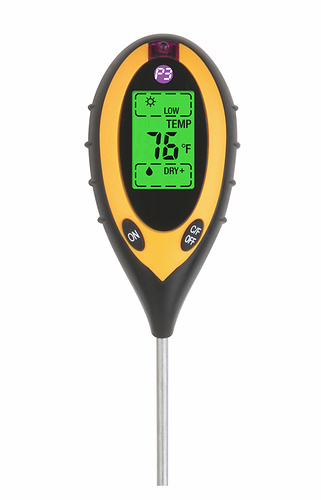The area is only used to estimate how many gallons that you’re using. This shouldn’t be the issue.
How do your watering times for the lawn (durations and frequency) compare to how you would be watering if you were on your previous controller?
A couple of thoughts before we even address some of the settings. I checked your temps for the last couple of months and noticed that you’ve had some fairly warm days. Not even a controller as “smart” as Rachio can control the weather.
Tomatoes generally do best in the 70° - 80°F temp range. When the daily temps hit the 90s - 100s, the plants will be stressed. The best season to grow tomatoes in your area are early spring and early fall. Sure, a gardener might be able to keep tomatoes alive through the hot, dry summer months, but it’s an uphill battle. One summer just for an experiment, I tried a heat-tolerant variety. It did OK, but the fruits were not as tasty or juicy as some of the cooler season varieties. Here in the desert, I don’t even try to grow tomatoes in the summer.
Try some warm weather crops such as melons, okra, some varieties of corn, eggplant and chiles. Plant new tomato plants in the early fall for a harvest before frost.
As you mentioned, the fescue lawn may be difficult to keep happy in the summer–it’s stressing from the high temps, too.
For the lawn, I’d typically water three set days a week for around 23 minutes, but in the heat of the summer, I’d boost that up by adding something like a 20% Season Adjust, which would add somewhere around another 5 minutes to the zone’s watering time. So yes, I used to apply more water in the hottest days than the Rachio does now.
As for the growing beds, I’m realizing they’re getting about half the water they used to get. I’d let the drip lines in the vegetable garden run for something like 4 hours twice a week. The Flex schedule has me doing around 4 hours a week, total, delivered every other day or so. That clearly needs to change.
Sunny, thank you for your gardening input. But I must tell you that I’ve had marvelous luck with tomatoes in past growing seasons. They actually seem to enjoy the Sacramento heat. I’ve had monstrous, 10’ high plants that were very productive right through October.
I think I’m realizing that my current Flex schedule is not delivering nearly enough water. So the question is, what’s the best way to bump up the watering time?
Increase the Crop Coefficient in the Advanced Settings for the zone and it will increase the freq of watering. Now that may just increase how often that zone gets watered. The duration itself would likely be adjusted in the schedule itself zone by zone.
Are you using the default drip line precipitation rate (under advanced zone settings)? The default could be higher than actual. If so, reducing that value would cause water duration to increase.
This post may help you calculate precipitation rate for drip
I concur with @ssindelman and @Kubisuro. I would proceed in this order:
- Double check your soil
- Double check your root depth.
- Drop your precipitation rate until you get the amount of water you expect, or use the drip calculator that @Kubisuro pointed you to.
- Change the crop coefficient to change the frequency
#1 and #2 will give you a baseline of the amount of water delivered, and a baseline frequency. Getting that baseline as close as possible to reality is important to keep things within reason. #3 will allow you to tweak the amount of water delivered if #1 & #2 don’t seem to be giving you what you expect. The baseline drip settings can often be a fair amount off. Once you have your duration about where you want it, #4 will allow you to modify frequency. I believe that you can go over 100% for crop coefficient.
You may ultimately still have the problem I had. In my case the temps got so hot (> 110F or so) that I needed to water later in the day, and Flex Daily only fires once per day. If you’d like to learn more specifics on my case check out the thread below. You shouldn’t have the same problem with your lawn, but we’ll see.
Awesome suggestions everyone! @Raymondo17 If you haven’t discovered yet, when you adjust any of the zone characteristics you can immediately go to the soil moisture graph and see the simulated watering for the next two weeks. That is usually helpful in fine tuning and viewing how zone changes will impact watering frequency.

Glad to hear your green thumb has been able to keep your indeterminate vines growing during the hottest times. Your growing conditions are acceptable because the nights cool off.
Here in the Phoenix area, that’s tough to do when the night-time temps do not drop below the high 80s, although I do have one plant that refuses to die. It’s looking a bit straggly right now and normally I would have pulled the plant out, but it’s in a pot and not taking up space in the veggie beds.
Tomatoes do not set new fruit when the temps are consistently high, because they are self-fertile and the heat causes their pollen to be no longer viable. When the temps fall, those plants will begin to flower and produce fruit again.
Fortunately there are so many varieties of tomato that it’s easier to find one that suitable for different climates and growing conditions. What variety of tomatoes do you find best for your climate?
The responses posted by @ssindelman, @azdavidr and @Kubisuro are great suggestions. After double-checking settings as @azdavidr outlined, I would check the crop coefficient and bump it up a bit during the hottest part of the summer.
Alternately, you could create a new fixed schedule with durations of your choosing to get your plants through the summer.
With looking at your setting, I’m puzzled why you aren’t watering more often. You’ve already got the crop coefficient at 100%, so you’re telling the system that the plants need lots of water. My first thought is to try upping this even more. I don’t know what the Rachio upper limit is, but I would sure try 110-115 if I could. Your root depth looks like it’s good for the tomatoes, but they probably have the deepest roots, so I would think the other plants would be suffering even more. You could put your allowed depletion to 20 or 25% – that’s what I’ve seen recommended from other sources, and for all my annuals and perennials, I’ve set it at 25%. Another big change might be to set the nozzle inches down. I don’t know what your dripline is putting out — I use mostly 1/2GPH emitters, and I’ve set mine at .2 inches per hour — that would definitely get you more watering time.
You’ve been getting great suggestions from everyone on this thread!!!
After you try some of these changes and if you are still not happy with the results, I agree with @sunny about maybe putting the garden on a fixed schedule.
Wow, I’m blown away by all the good advice here. Thanks everybody!
I appreciate the tip to double check my settings, as now that I look at the new-and-improved Rachio app, clearly some important things have been added. For one thing, I noticed that there are new options. For example, there’s a Zone Type option for “Garden” when before the closest I could get was “Perennials.” Unless I’m mistaken, the Spray Head option for “Drip Line” is new, when before I simply had “Emitter.” I’ve now changed the options to “Garden” and “Drip Line” in the hope that those will yield better results for my vegetable garden.
If I understand this correctly, reducing the Allowed Completion percentage will result in more water being applied. I’ve adjusted this from 30% to 20%. And reducing the Nozzle Inches Per Hour will also add time to the watering sessions. I’ve reduced this from 0.5” to .25”.
I’m going to leave the Crop Coefficient alone for now, as instead of upping the frequency of waterings, I’d prefer to water infrequently yet deeply.
Do the revisions above seem reasonable to add some much-needed moisture to my landscape?
Franz, I must admit that I’m not sure what I’m seeing here in the Soil Moisture section. First off, on the main page for my vegetable garden, it shows 0% for the Soil Moisture. (That sounds bad to me.) Clicking the arrow for more info brings me to what looks like the constellation Cassiopeia – a zig zagged diagram showing a yellow dot at one of the “stars” which touches the Allowed Depletion line. At the bottom is a Fill button and an Empty button. Would you mind giving me the Cliff Notes on how I should interpret this info, and when I would use the Fill or Empty button?
My very favorite tomato variety is Sun Gold, which are golden cherry tomatoes that are incredibly sweet. My kids eat 'em straight off the vine and love ‘em better than candy. We also have good luck with Early Girl and Better Boy. One season I tried several heirloom varieties, like Cherokee Purple, but I found they didn’t seem to care much for Sacramento sizzlin’ summers. At least, I didn’t have much luck with them.
Fun fact, we increased crop coefficient to go up to 150% just for tomatoes.
This explains moisture levels much better than I can. The fun thing is you can click on the right arrow (>) and see our simulated watering for the next two weeks.
![]()
No, it’s actually the opposite. When you reduce the Allowed Depletion, you are saying to not let the plant dry out as much and add water sooner. But since the water doesn’t need to go down as far, it’s going to add less water than if it was trying to go down to the wilt level.
I found a really good article on Sweet Peppers and Tomatoes from Utah State University. It’s probably WAY more detail than you will ever want to know, but at the beginning of the article, they recommend an allowed depletion of 25%, but I believe that is based on a tomato root depth of 24". Whatever the root depth, though, most recommendations I have seen for vegetables and annuals and perennials is 25%.
https://digitalcommons.usu.edu/cgi/viewcontent.cgi?article=1738&context=extension_curall
This change should help quite a bit with the watering time.
I typically don’t recommend from changing the industry standard allowed depletion of 50%  We have other levers that are easier to understand and change (i.e. crop coefficient).
We have other levers that are easier to understand and change (i.e. crop coefficient).

Not yet, and I’m getting ready to travel again. But I’m ordering one to have when I get back! Are you using one? I figure the manual ones are cheap enough to give them a try!

 I actually used it to settle a “discussion” about over-watering.
I actually used it to settle a “discussion” about over-watering.